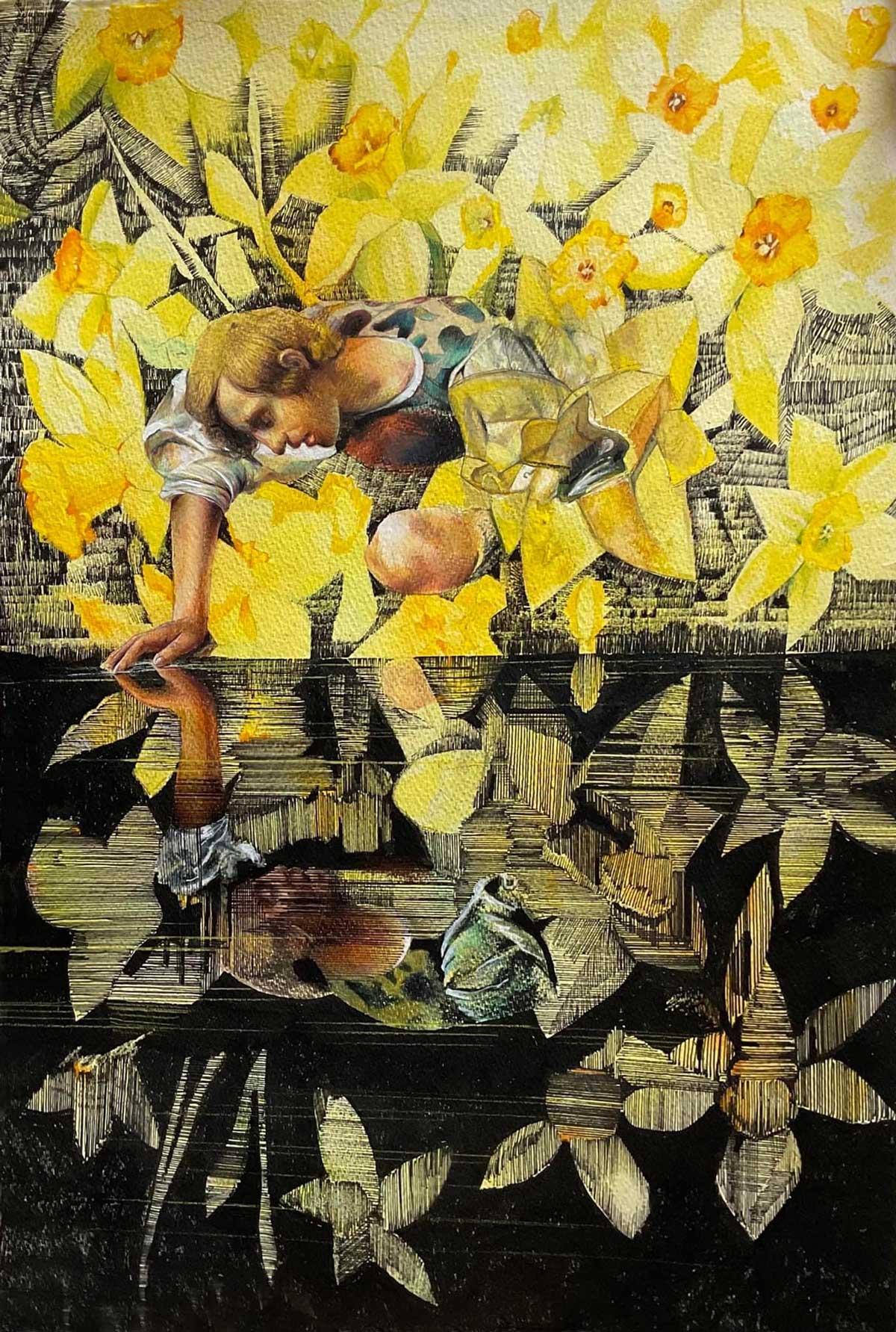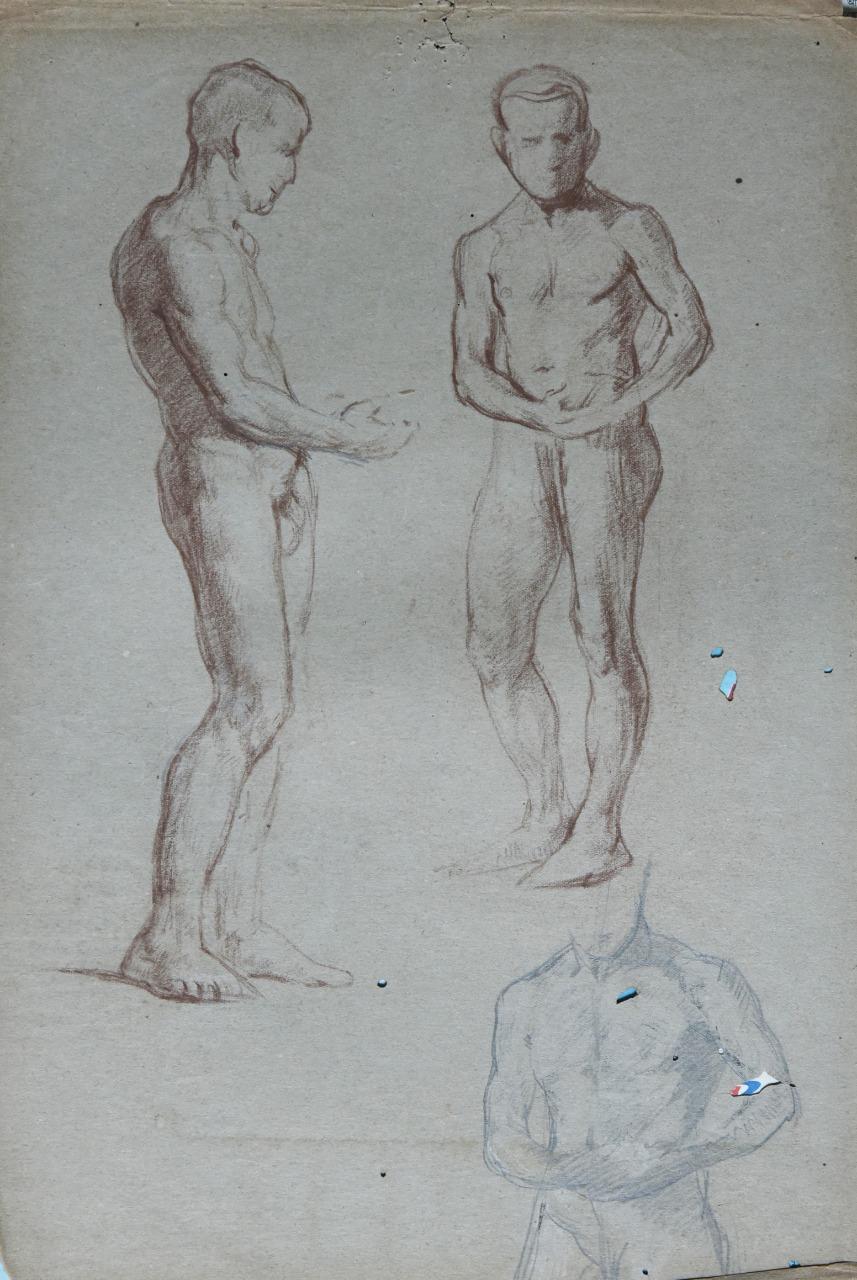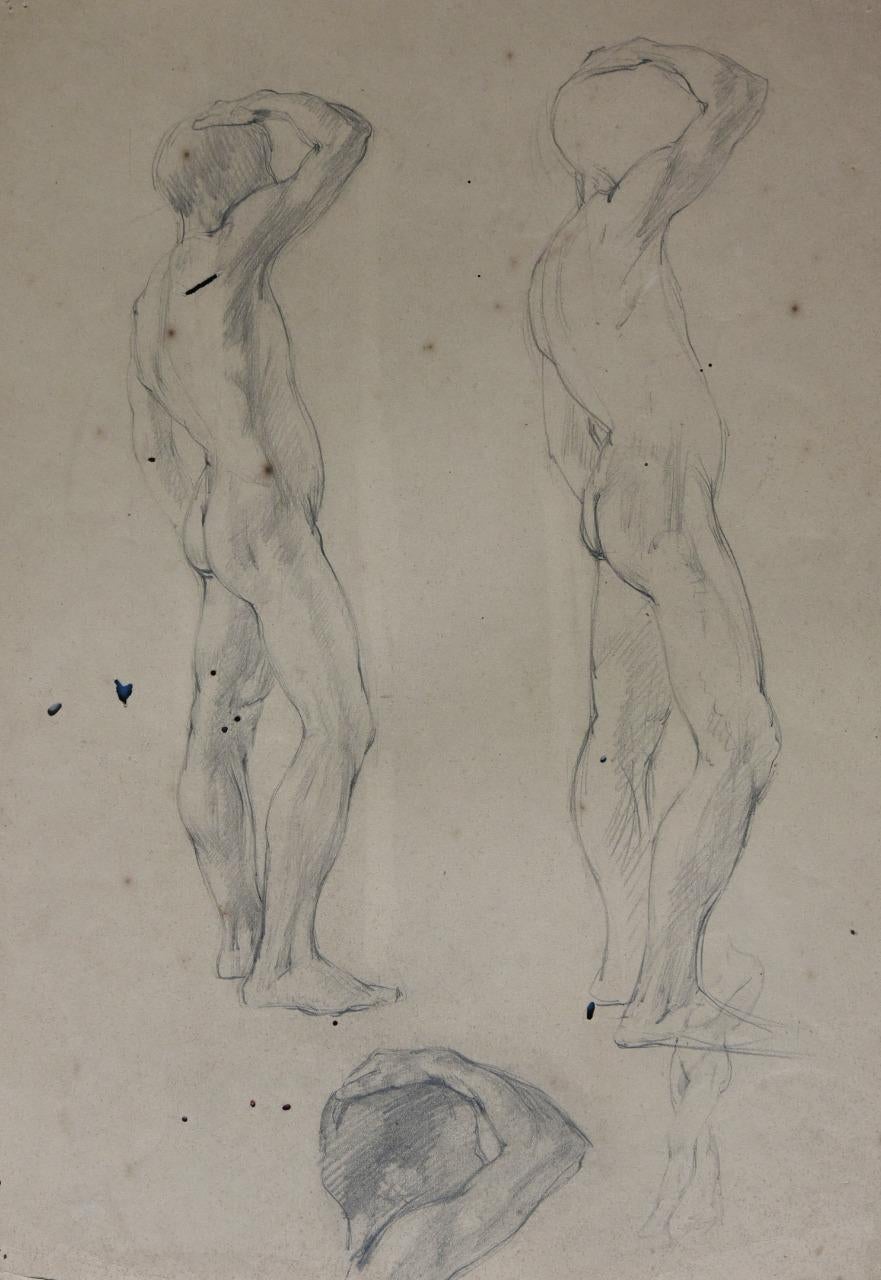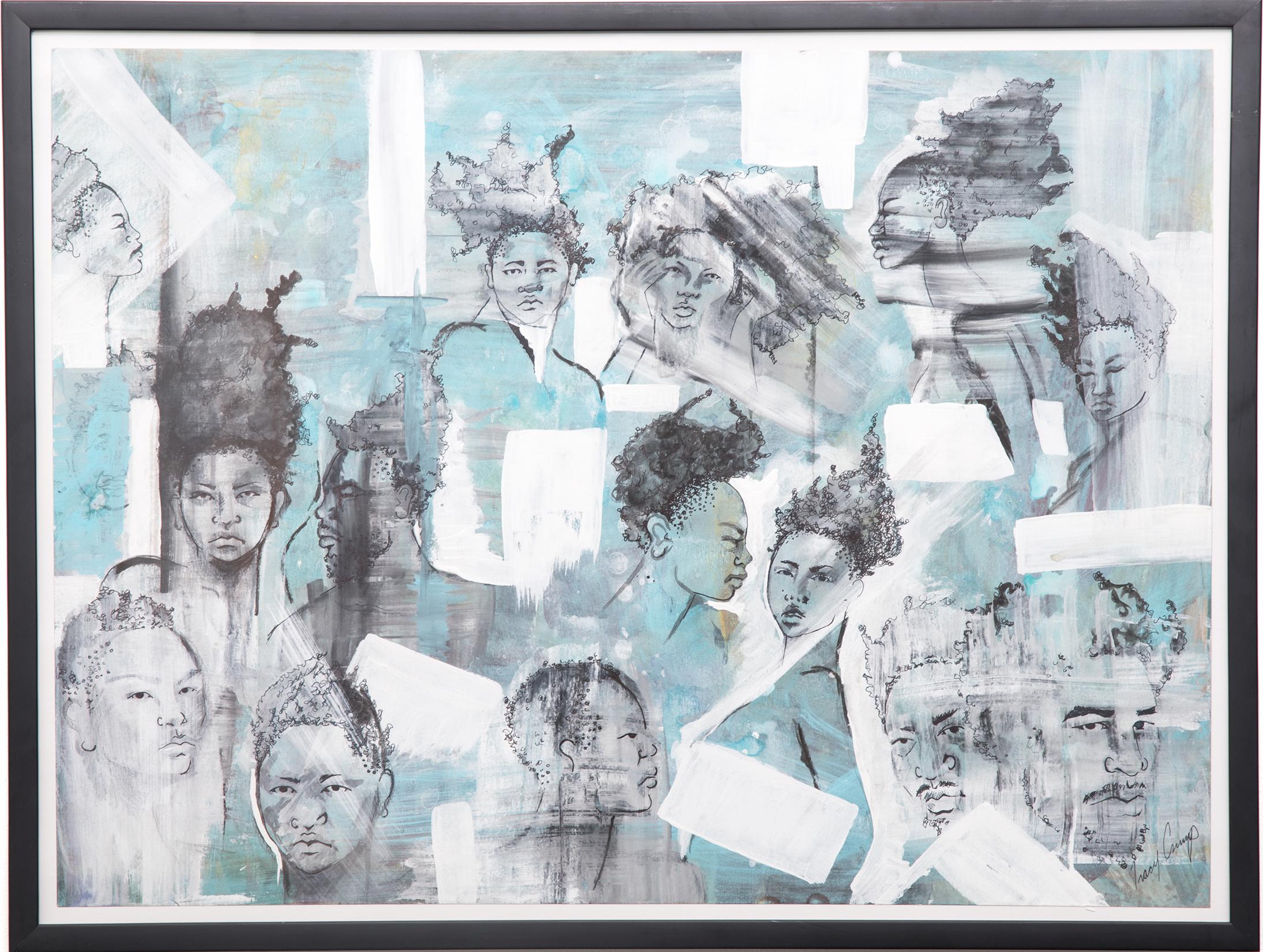Items Similar to Scroll painting of the American ship commanded by Commodore Matthew Perry
Want more images or videos?
Request additional images or videos from the seller
1 of 9
Scroll painting of the American ship commanded by Commodore Matthew Perry1854
1854
About the Item
Attributed to Ukita Ikkei (1795-1859)
Hanging scroll painting of the American ship commanded by Commodore Matthew Perry in Uraga Bay, annotated: ‘1854 Spring first month 8 xx (February) Kan-no Hachiro saw this big American wheel vessel past Cape of Kan-non going to Uraga village’
Ink on paper,
L. 130 x W. 29 cm (scroll)
H. 28 x W. 19 cm (painting)
Based on the description by Kan-no Hachiro of the return of Perry’s ship to the bay of Edo in 1854, Ukita Ikkei presumably made this painting. The artist’s family name was Toyotomi and the first name Kõshin later changed to Yoshitame and finally Ikkei.
Kan-no (1810-1880) was a peasant from the village of Iwashiro. In 1854 he saw Perry’s ship passing on the way to Edo Bay. Kan-no was an ardent follower of the Sonno foi Movement, a movement advocating loyalty to the Emperor and the expulsion of foreigners.
Despite his low status, he became a significant and famous figure in the Sonno foi Movement, and for this, he was punished by the Edo Bakufu, the Shogun government. He was banished to Hachijyo, a small island far away in the Pacific Ocean.
Perry’s first violation of Japanese autonomy was on the third day of the sixth month of 1853 (July 8), on the eleventh day of the first month of 1854 (February) he was back in the Bay of Uraga, and on the 31st of March the Convention of Kanagawa, opening the ports of Hakodate and Shimoda to American vessels, was signed.
Literature:
Encyclopedia of Japanese painters, ‘Nihon gaka jiten’ p. 17
- Attributed to:Ukita Ikkei (1795 - 1859, Japanese)
- Creation Year:1854
- Dimensions:Height: 51.19 in (130 cm)Width: 11.42 in (29 cm)Depth: 0.08 in (2 mm)
- Medium:
- Movement & Style:
- Period:
- Condition:
- Gallery Location:Amsterdam, NL
- Reference Number:1stDibs: LU1471210574672
About the Seller
No Reviews Yet
Vetted Seller
These experienced sellers undergo a comprehensive evaluation by our team of in-house experts.
1stDibs seller since 2021
Typical response time: 9 hours
- ShippingRetrieving quote...Ships From: Amsterdam, Netherlands
- Return PolicyA return for this item may be initiated within 7 days of delivery.
More From This SellerView All
- 1854 Funeral of R. Williams at Gyokusen-ji Temple, Shimoda, with Commodore PerryLocated in Amsterdam, NLWilhelm Heine (Dresden 30 January 1827-Löbnitz 5 October 1885) ‘Funeral of Robert Williams in the cemetery of the Temple Gyokusen-ji at Shimoda in April 1854’ With a sticker on the reverse of the frame by Coupil & Co. 1855 Watercolour on paper, H. 57 x W. 92 cm Depicted is the Bay of Shimoda with seven American ships including the two paddle-wheel warships USS Mississippi and Susquehanna. On the Gyokus- en-ji temple grounds on the right is the coffin in the middle with the remains of US marine Robert Williams, ready to be lowered into the grave. Looking on from the left are the Buddhist monks and Japanese officials who joined the first Christian funeral on Japanese soil. Around the grave are US marines, Commodore Perry...Category
Mid-19th Century Figurative Drawings and Watercolors
MaterialsPaper, Ink, Watercolor, Gouache
- Beach of Kusambe, Bali 1937Located in Amsterdam, NLFour outrigger proa’s on the beach of Kusambe, Bali, 1937 Signed with initials, dated and described with location bottom left Pencil and ink on paper, 29.7 x 35 cm In ebonized frame with white mount WILLEM OTTO WIJNAND NIEUWENKAMP (1874-1950) Nieuwenkamp was born on July 27th 1874 in Amsterdam. His father owned sailing ships sailing to Indonesia and hearing the stories of the returning captains evoked in the young Nieuwenkamp an obsession for distant lands and adventure. After a failed attempt by his father to have his son make a career in his business, Nieuwenkamp attended the Academy for Decorative Art in Amsterdam. However, he left within one year to go his own way. He was an autodidact and a great experimenter with new techniques, particularly in the art of etching. Nieuwenkamp was a very focused man with the discipline of a scientist tempered by the sensitivity of an artist, a lust for adventure, a natural appreciation for ethnic arts and an enormous ambition to tread new paths. In 1898 he visited Indonesia for the first time and on his second visit in 1903-1904 he went on to Bali and became the first foreign artist to love Bali and the Balinese with a passion. Having secured agreements with several museums in the Netherlands to obtain Balinese art and objects for their collections, Nieuwenkamp immediately started to purchase and order a wide range of ethnographic art and objects from local artists and craftsmen. Through his drawings and books, he gave an excellent impression of Balinese art and culture at that time. Since 1854 Northern Bali was under Dutch...Category
1930s Art Nouveau Landscape Drawings and Watercolors
MaterialsIndia Ink, Paper, Pencil
- Statue of Vishnu Garuda, Bali, 1904Located in Amsterdam, NLStatue of Vishnu Garuda, Bali, 1904 Signed with initials Pencil and ink on paper, 21.4 x 21.3 cm Literature: Bruce W. Carpenter, W.O.J. Nieuwenkamp. First European Artist in Bali,...Category
Early 1900s Art Nouveau Landscape Drawings and Watercolors
MaterialsPencil, Paper, India Ink
- Devotion in the Dessert near the pyramids of Gizeh, circa 1919By Marius BauerLocated in Amsterdam, NLMarius Bauer (1867-1932) ‘Devotie in de Woestijn’ (Devotion in the Dessert near the pyramids of Gizeh, circa 1919) Signed lower right and titled lower left Watercolour on paper, H...Category
Early 20th Century Impressionist Landscape Drawings and Watercolors
MaterialsPaper, Pencil, Watercolor, Ink
- Borobudur, Java, Indonesia (1937)Located in Amsterdam, NLGraveyard with in the background the Borobudur, 1937 Signed with initials and dated bottom left Pencil and ink on paper, 33 x 29 cm In ebonized frame with white mount Literature: ...Category
1930s Art Nouveau Landscape Drawings and Watercolors
MaterialsPaper, Ink, Graphite
- Wobbly bridge, Tabanan, Bali, 1937Located in Amsterdam, NLWobbly bridge, Tabanan, Bali, 1937 Signed with initials bottom right and dated, bottom left Pencil and ink on paper, 22 x 26.3 cm In ebonized frame with white mount Willem Otto Wi...Category
1930s Art Nouveau Landscape Drawings and Watercolors
MaterialsIndia Ink, Paper, Pencil
You May Also Like
- Narcissus after Caravaggio - contemporary colourful watercolour painting paperLocated in London, GBFramed Size: 96 x 77 After meeting at art college in 1986 Stephen and Lorna nurtured a friendship, their individual careers and respective family lives. By chance, 30 years later, t...Category
2010s Contemporary Figurative Paintings
MaterialsPaper, Ink, Watercolor
- Angel Shades - contemporary colourful watercolour painting paperLocated in London, GBAfter meeting at art college in 1986 Stephen and Lorna nurtured a friendship, their individual careers and respective family lives. By chance, 30 years later, they united joyfully ha...Category
2010s Contemporary Figurative Paintings
MaterialsPaper, Ink, Watercolor
- Royal Academy Series-7, Conte on Paper, Modern Artist Atul Bose "In Stock"Located in Kolkata, West BengalAtul Bose - Royal Academy Series-6 Pencil on Paper, 15 x 11.2 inches (Unframed Size) 1924-26 (Delivered Unframed in as is condition) Atul Bose was a master artist whose creative journey spanned several decades and left an indelible mark on the Indian art scene. He was born in 1898 in a small village in Bengal and showed an early aptitude for art. Despite facing financial difficulties, he pursued his passion and enrolled in the Government School of Art in Calcutta. Bose's early works were influenced by the Bengal School of Art, which was a movement that sought to revive traditional Indian art forms. However, over time, Bose developed his own unique style that blended elements of Indian art with European modernism. He was particularly influenced by the works of artists like Paul Cezanne and Georges Braque. Bose spent two years, 1924-6, at the Royal Academy. He was heavily influenced there by the post-impressionist Walter Sickert. He refused an invitation to help decorate the pavilion at the British Empire Exhibition in 1924 with Mukul Dey...Category
1920s Modern Figurative Drawings and Watercolors
MaterialsConté, Paper, Ink, Pen, Pencil
- Royal Academy Series-6, Pencil on Paper, Modern Artist Atul Bose "In Stock"Located in Kolkata, West BengalAtul Bose - Royal Academy Series-6 Pencil on Paper, 15 x 11.2 inches (Unframed Size) 1924-26 (Delivered Unframed in as is condition) Atul Bose was a master artist whose creative journey spanned several decades and left an indelible mark on the Indian art scene. He was born in 1898 in a small village in Bengal and showed an early aptitude for art. Despite facing financial difficulties, he pursued his passion and enrolled in the Government School of Art in Calcutta. Bose's early works were influenced by the Bengal School of Art, which was a movement that sought to revive traditional Indian art forms. However, over time, Bose developed his own unique style that blended elements of Indian art with European modernism. He was particularly influenced by the works of artists like Paul Cezanne and Georges Braque. Bose spent two years, 1924-6, at the Royal Academy. He was heavily influenced there by the post-impressionist Walter Sickert. He refused an invitation to help decorate the pavilion at the British Empire Exhibition in 1924 with Mukul Dey...Category
1920s Modern Figurative Drawings and Watercolors
MaterialsInk, Pencil, Conté, Paper, Pen
- Follower of Francesco Guardi, Figures in a Mediterranean port by a Roman ArchBy Francesco GuardiLocated in Harkstead, GBA lively, well executed sketch painted by a 19th century follower of Francesco Guardi Follower of Francesco Guardi, 19th Century Figures by a Roman Arch Watercolour with ink and sc...Category
19th Century Old Masters Figurative Drawings and Watercolors
MaterialsPaper, Ink, Watercolor
- 'The People People 2, " Acrylic Paint on Canvas, 2006Located in Chicago, ILIn this series entitled "The People People," Tracy Crump uses washes of grey, white and aqua to both conceal and reveal sensitively drawn figures. Each figure stands alone as an indi...Category
21st Century and Contemporary Outsider Art Figurative Drawings and Water...
MaterialsPaper, Ink, Acrylic, Watercolor
Recently Viewed
View AllMore Ways To Browse
American Ship
American Ships Painting
Paintings Of American Ships
American Government
Antique Ship Painting Paintings
Antique Ship Painting
Antique Ship Paintings
Antique Paintings Of Ships
Drawings Of Ocean
Paper Scroll
Ship Painting 19th
Hanging Scrolls
19th Century Painting Of Ships
Mid Century Ship Painting
Ink Scroll
American 19th Century Watercolors
Painting On Scroll Paper
Antique Hanging Scroll





